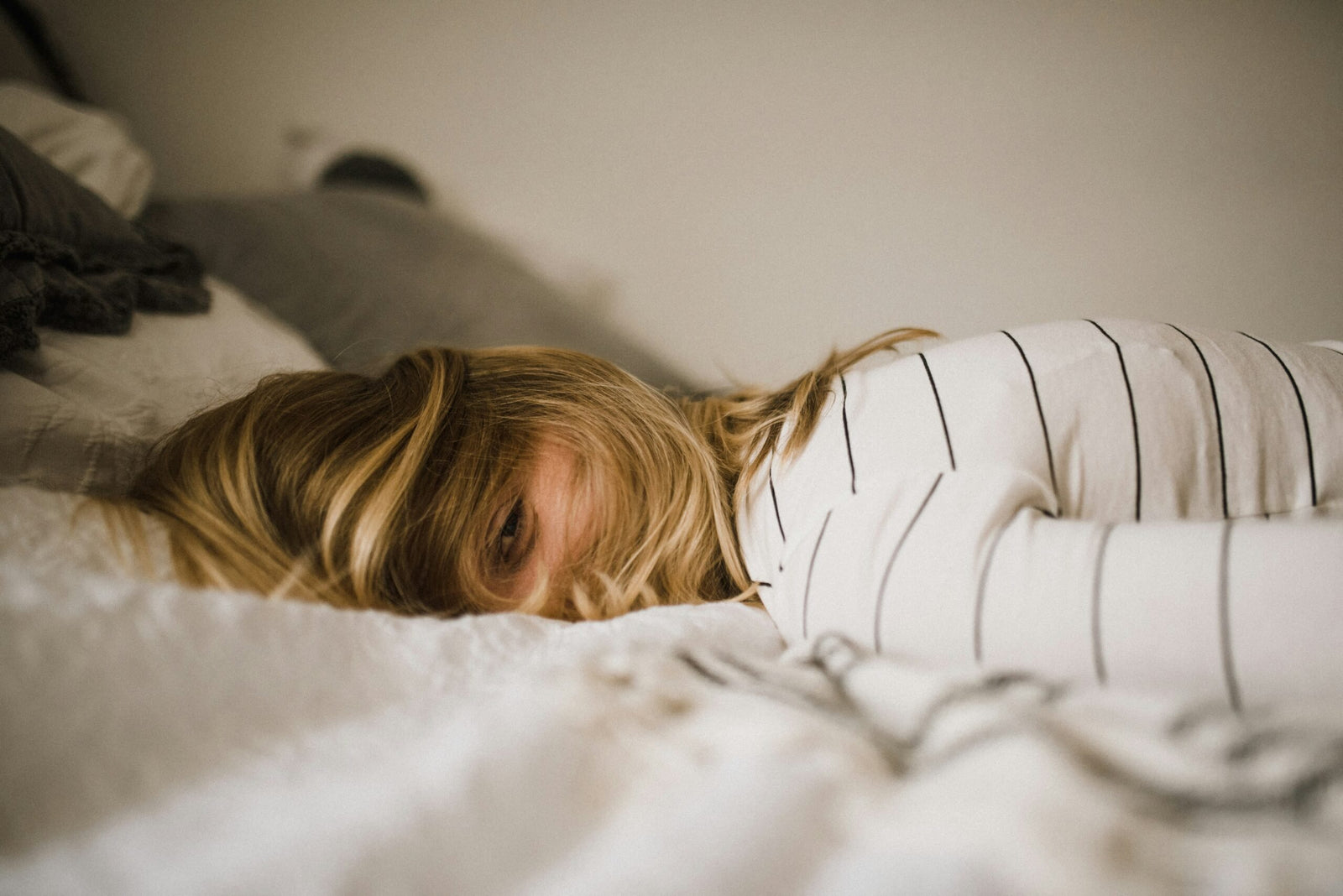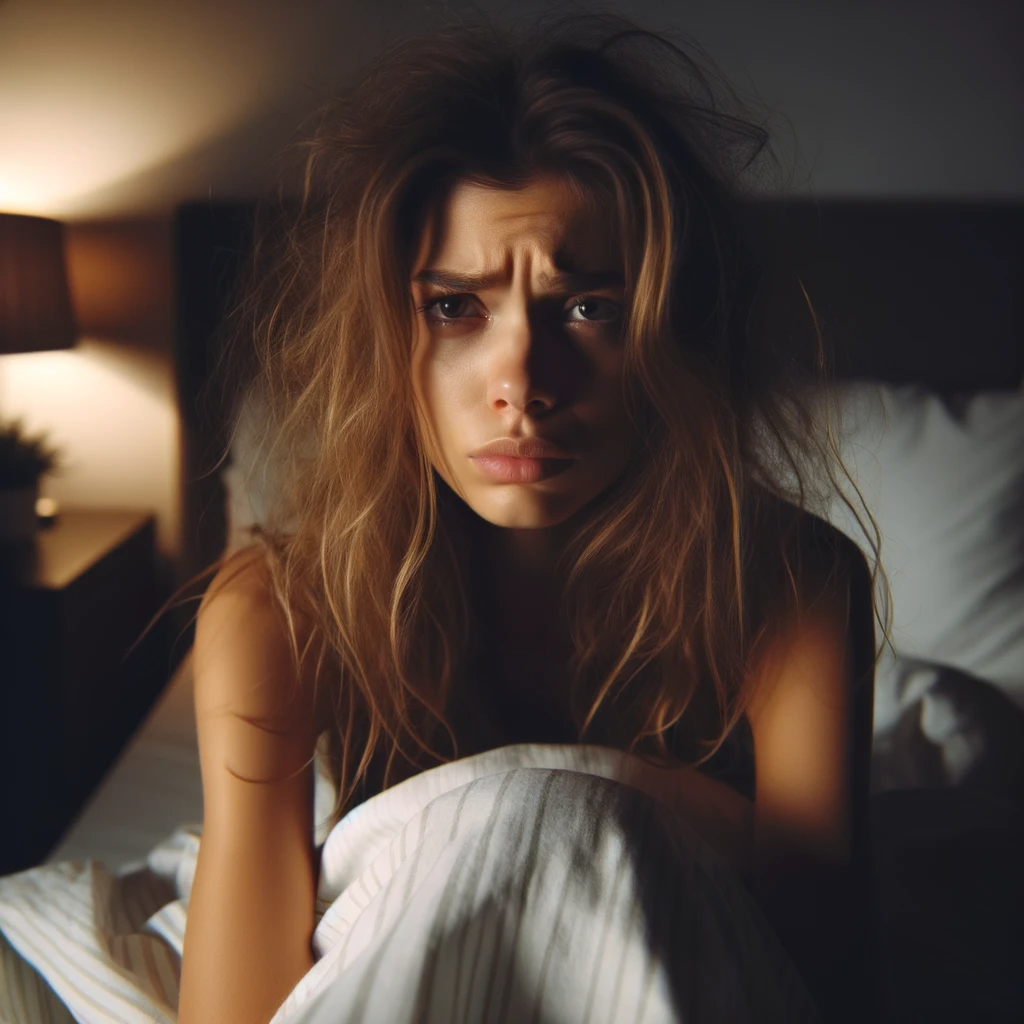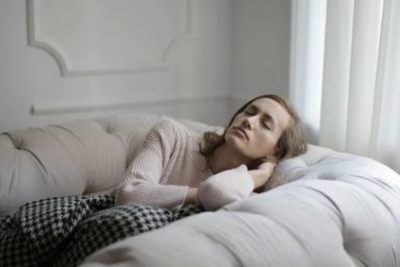
The 7 Different Forms of Insomnia
Of the 70 million Americans with some type of Sleep Disorder, the largest percentage suffer from one of the 7 different forms of Insomnia. The Insomnias category is vast and varied and seems to be under constant evaluation in regard to ID and treatment—which can be frustrating as well as disconcerting.
But the key concern isn’t so much that we might receive a mis-diagnosis—it’s that too often, sleep disorders aren’t being diagnosed at all. So, let’s first talk about that…
Priorities
It seems, as a whole, we Americans still aren’t making sleep a priority, and this severely compromises our physical, mental, and emotional health.
Here’s a question: If you experienced symptoms you thought might indicate a serious health condition like diabetes, cardiovascular disease, or mental illness, would you seek help? You probably would, but…
What if I told you that by getting treatment for your Insomnia or other Sleep Disorder, you might be able to avoid a number of serious illnesses altogether?
Sleep disorders are one of the most common—most frequently overlooked—and yet, most readily treatable health conditions we’re faced with. But despite a wealth of resources, many people never seek help for these afflictions. In fact, an estimated 80-90% of adults with Sleep Apnea disorder remain undiagnosed.
Addressing disorders
When we fail to recognize, diagnose and treat our sleep issues, we also fail to prevent the consequences that follow. As an example, untreated Sleep Apnea can lead to: Hypertension, Type 2 Diabetes, Liver Problems and Metabolic Syndrome. Likewise, Untreated Insomnia may end in: Chronic Fatigue, Obesity, Cardiovascular Events, or Mental Health issues.
In addition to these potentially life-shortening health concerns, sleep disorders adversely affect our lives on a daily basis; impeding job performance, and affecting our moods and attitudes which, more often than not, also damages relationships. Check out this short video from “The Sleep RN,” Julia Worrell to learn more.
What exactly is a sleep disorder?
Conditions that impair or disrupt your sleep, prevent you from getting restful sleep, and cause you to experience daytime sleepiness and other types of fatigue… all fall under the umbrella of Sleep Disorders. Below are basic symptoms—if you’re experiencing any of them more than just occasionally, they should be addressed:
- You ‘re regularly unable to fall asleep, stay asleep, and/or get quality sleep.
- You wake up feeling drained and struggle to get out of bed, day after day.
- You’re excessively sleepy during the day—even when you get 7 or more hours of sleep.
- You’re too tired to focus on tasks and may experience lapses in memory.
- Your sleepiness has begun to manifest in anxiety, depression or irritability.
Nearly 40% of adults admit to unintentionally falling asleep during the day at least once a month.4.2% report they’ve fallen asleep or nodded off while driving in the last 30 days. (CDC)

The importance of sleep cannot be overstated. Chronic sleep loss compromises health at every level—interferes with our ability to perform well, creates discord in families and other relationships—and puts personal safety at risk. With over 2500 AASM accredited sleep centers available to us in the United States, it’s time we started making better use of them and the valuable assistance they can offer.
Sleep Disorder categories
There are seven major categories of Sleep Disorders which include:
- Central disorders of hypersomnolence (excessive sleepiness/Narcolepsy)
- Circadian Rhythm sleep-wake disorders (misaligned sleep-wake cycles)
- Insomnias (trouble with falling asleep, and length & quality of sleep)
- Parasomnias (includes sleep-walking and night terrors)
- Sleep-related breathing disorders (snoring/Sleep Apnea)
- Sleep-related movement disorders (includes Restless Leg Syndrome)
- “Other” Sleep Disorders (environmental causes like noise, temperature, EMFs )
In all, these categories comprise 81 types of sleep disorders but the majority of people suffering from disordered sleep fall under “the Insomnias.” 30% of adults suffer from some form of Insomnia—this includes a staggering 63.3% of women.
These are not small numbers. Can one disorder really be taking such a heavy toll on so many people’s quality of life? Let’s dive deeper into the seven main forms of Insomnia that represent the #1 sleep disorder in the U.S...
The 7 main forms of Insomnia
First, what is Insomnia?
Insomnia is the effect of insufficient or poor-quality sleep. It is not so much defined by a specific length of time one spends in sleep, but rather by the lack of sleep relative to one’s needs. Here are the 7 main ways Insomnia manifests…
1—Primary Insomnia
Primary insomnia is the diagnosis you’re left with once you’ve eliminated any other cause of your sleep difficulty. You will have trouble falling asleep and will sleep little during the night. There is no other diagnosed sleep disorder—there is no apparent medical condition, no medication or other substance—or environmental factor, interfering with your ability to sleep. You just can’t ever seem to get enough sleep to feel rested.
*This condition may be brought on by depression or anxiety but if neither of these are the result of a medical or chemical interference, you’re dealing with primary insomnia.
How to fix primary insomnia?
Primary insomnia is mainly treated through medication and lifestyle changes with a focus on practicing good sleep hygiene—which includes eliminating alcohol and caffeine before bedtime. Here are some basic and effective lifestyle changes to help fix your sleep:
- Go to bed and wake up at the same time each day—even on weekends.
- Get plenty of physical activity so you’ve used up your energy—do not exercise in the last few hours before bed.
- Consume a diet that supports good sleep—work with yourchronotype to eat the right things at the right times.
- Create an environment that’s conducive to sleep—low light, cool temp, and the right bedding for starters.
- Develop and follow a nightly wind-down routine—you can’t fall asleep when you’re stressed.

Sippinggreen tea throughout the day (not at night) may help reduce fatigue and increase sleep quality due to L-theanine—a compound that helps relax your brain by reducing stress-related hormones and neuron excitement.
2—Secondary Insomnia
Co-morbid or secondary insomnia is when your insomnia symptoms are caused by an illness or condition—which can be a multitude of problems from heartburn to—depression—to chronic disease. It may also be triggered by medications, smoking, alcohol, or chronic pain.
What’s the fix?
Managing or treating the triggering conditions can help treat the Insomnia. Once again, we see a bi-directional relationship with sleep—better sleep quality makes us better equipped to handle our health issues. You should also:
- Check with your doctor to see if any of your medications may be affecting your sleep.
- Never try to ignore your pain—first of all, you can’t. Secondly, it is guaranteed to keep you awake.
- Avoid alcohol in the last few hours before bed—it is not a sedative. Smoking is a bad idea as well.
3—Onset Insomnia
Onset Insomnia is marked by an inability to fall asleep when it’s time for bed. Causes may include short-term stressors, lifestyle changes, inadequate exercise, late meals, stimulants, blue light and environmental noise.
Symptoms are likely to include persistent fatigue, poor focus, irritability and depression. Severity of symptoms is dependent on how long the insomnia lasts—a prolonged bout can seriously impact quality of life.
About 50% of insomnia cases result from anxiety, depression, or psychological stress.Sleep disruptions caused by noise can cause extra production of adrenaline and cortisol—potentially elevating heart rate andblood pressure.

How can you fix Onset Insomnia?
Take steps to deal with any anxiety.
It’s a fact that up to 90% of people living with anxiety or depression suffer some type of sleep disorder—that disorder is often sleep onset insomnia. Make sure not to carry worries to bed with you. It’s also important to not let anxiety over not getting your sleep make the problem worse.
Try our pink noise earbuds to calm your mindso you can fall asleep and stay asleep—they’ll also block out any environmental noise that may be keeping you up—like barking dogs or that snorer next to you!
4—Maintenance Insomnia
With Maintenance Insomnia, one finds it pretty much impossible to stay asleep. There’s a tendency to awaken frequently and an inability to fall back asleep once awake. Such disturbances keep most sufferers tossing and turning—and up most of the night.
These steps will help fix your Maintenance Insomnia
- Make your sleep space a sleep sanctuary—soft lights, calming scents—and turn the clock away from the bed.
- Don’t go to bed until you are sleepy—if you’re still awake after 20 minutes, get up and do something boring.
- Use blackout curtains or a sleep mask to block out light—no blue light devices for an hour before bed.
- Try reading a paper book, breathing exercises, or meditation to ease your body and mind into sleep.

Stressors we deal with during the day, can wreck our nights as well, by preventing restful sleep. According to the American Psychological Assoc., adults with lower stress levels sleep more hours per night than adults with higher stress levels (7.1 vs. 6.2 hours).
5—Acute Insomnia
Acute Insomnia is typically shorter in duration (less than 3 months) and brought on by an unexpected life event—disturbing news like a break-up or unexpected job loss—or possibly shift work or jet lag. It may also be referred to as: adjustment insomnia, short-term insomnia, stress-related insomnia, or transient insomnia.
One will experience difficulty falling asleep, staying asleep, and early morning awakenings which will all occur despite adequate opportunity and circumstances for sleep. Other symptoms may include fatigue, lack of focus, social or vocational dysfunction, tension and headaches.
The fix for Acute Insomnia?
In most cases, this condition resolves when the individual adapts to the stressor—or the stressor is removed. Being proactive in prioritizing your sleep can help you avoid acute insomnia:
- Work with your chronotype to maintain your natural biorhythms.
- Practice a healthy lifestyle which incorporates a good diet, sufficient exercise, and stress management.
- Develop and practice all the principles of good sleep hygiene.
- Keep up with a regular wind-down routine to help you fall asleep and stay asleep.
6—Chronic Insomnia
Chronic insomnia typically lasts longer than three nights per week, with sleeplessness extending for as long as three months or more. Left untreated, it may go on for years.
This condition usually results from stress, travel or work schedules, life events, or lifestyle habits that inhibit sleep. It may also be caused by mental disorders, stimulants, or substance abuse. Symptoms may include:
- Difficulty falling asleep
- Frequent awakenings during the night
- Waking up too early
- Daytime tiredness or sleepiness
- Trouble with focus and/or memory
- Increased errors or physical accidents
- Ongoing stress over not sleeping
Chronic Insomnia can make it hard for you to function, but it is treatable. Left untreated, it will affect your health in numerous unpleasant ways. Consulting your doctor or a sleep specialist can help identify causes and get you on the road to full recovery quicker. Meanwhile, here are steps you can take to help improve your sleep:
How to fix chronic insomnia
- Take whatever steps are necessary to bring any stress in your life under control.
- Check with your doctor to make sure the underlying cause isn’t medical or chemical.
- Work with your chronotype to maintain your natural biorhythms.
- Daytime naps should also be taken at the right time for your chronotype.
- Try to find a better balance with oppressive work schedules.
- Avoid late dinners or heavy meals that may interfere with digestion.
- Avoid caffeine, alcohol and cigarettes in the hours before bed.
- Develop and maintain a bedtime wind-down ritual incorporating relaxation techniques.
Professional treatment for chronic insomnia is often Cognitive Behavioral Therapy (CBT.) 70-80% of patients who undergo this treatment respond favorably and are able to kiss their Insomnia goodbye.
7—“Other” Insomnias
This particular category of Insomnia includes Genetic and Environmental factors that influence both your ability to fall asleep, and to get the quality sleep you need.
Genetics
The chance of your DNA making you more likely to experience Insomnia ranges from 22%-59%—so on average, it’s about 39%. But while your genes can increase your risk of insomnia, they do not necessarily cause it.
If you’re aware that people in your family suffer from insomnia, take care to develop lifestyle habits that can help prevent you experiencing its devastating effects on your sleep and health. Start with the basics of good sleep hygiene:
- Establish a regular sleep/wake schedule and stick to it—weekends are no exception.
- Make your sleep space a sanctuary for your mind and body—relaxation is key.
- Use up your physical energy during the day so you’re tired enough to fall asleep at night.
- Practice lifestyle habits that support good physical, mental and emotional health.
Environmental triggers
Comfortable surroundings are essential to quality sleep. Light, temperature, sound, and electromagnetic fields all influence our ability to relax, fall asleep, and sleep deep enough and long enough to rejuvenate our bodies and minds. Here are basic tips for turning your environment into a comfortable, sleep-promoting space:
Light
Light plays a key role in regulating circadian rhythm, (your internal clock that tells you when it’s time to be alert and when it’s time to rest.) It also influences the production of melatonin, the essential sleep-promoting hormone you need for quality rest.
Pitch darkness is best as it reduces potential distractions and disruptions to sleep. When you leave a light on, it interferes with sleep cycles and causes more fragmented sleep—even though your eyes are closed. Blue light is especially disruptive to sleep so be sure to turn off all screens an hour before bed.
Temperature
The ideal sleep temp is considered to be 65 degrees Fahrenheit. This is because our body temperature naturally drops a bit during sleep and a cooler environment is more conducive to a good night’s sleep.
If the room is too hot, one is more likely to toss and turn and lose sleep—however either extreme is going to disrupt your comfort and prevent you from sleeping well. Set your thermostat to drop during sleep hours—and be sure to use the appropriate bedding to suit seasonal temperature changes.
Sound
If we’re going to hear sounds at night, we need them to be pleasant and soothing so they’re not disruptive to our sleep. And this goes for softer annoying sounds like a dripping faucet—not just banging pipes, snoring partners and noisy neighbors.
Noises that prevent us falling asleep or jar us out of a peaceful slumber have the potential for long-term health effects. Noise masking is highly effective for dealing with these issues as it replaces that sound we don’t want to hear with a more pleasant sound—allowing us more productive sleep.
EMFs
Studies have found EMF exposure within average daily exposure disrupts the release of melatonin in healthy people. These findings also showed that daily low-frequency EMF exposure decreased sleep quality while increasing depression and anxiety symptoms—compared to a control group who had no EMF exposure.
Because this exposure disrupts circadian rhythms, it makes it harder to get quality sleep—especially for highly-sensitive individuals. You can lessen exposure and get better sleep by removing devices from your sleeping space. This guide will help you reduce any harmful frequencies that may be preventing quality sleep.
Moving forward
We hope you’ve gained more understanding about the different forms of Insomnia and found tips you will use to help improve your sleep. Remember, Insomnia is usually treatable, and you can see surprising improvements with some simple adjustments to your daily routine.
Also remember, that while lifestyle changes, stress management and improved sleep hygiene are helpful, some people—especially those with Chronic Insomnia—may need to consult a doctor or sleep professional to ensure they’re getting the vital help they need.
Looking forward to seeing you in the next post where we’ll look at some of the lesser-known insomnias. Until then…
Wishing you great sleep—all night, every night!
SoundOff's robust noise masking blocks out disruptive sounds with soothing Pink Noise. If snoring or other noises are preventing your sleep, give our pink noise earbuds a try—you'll love what you can't hear!





